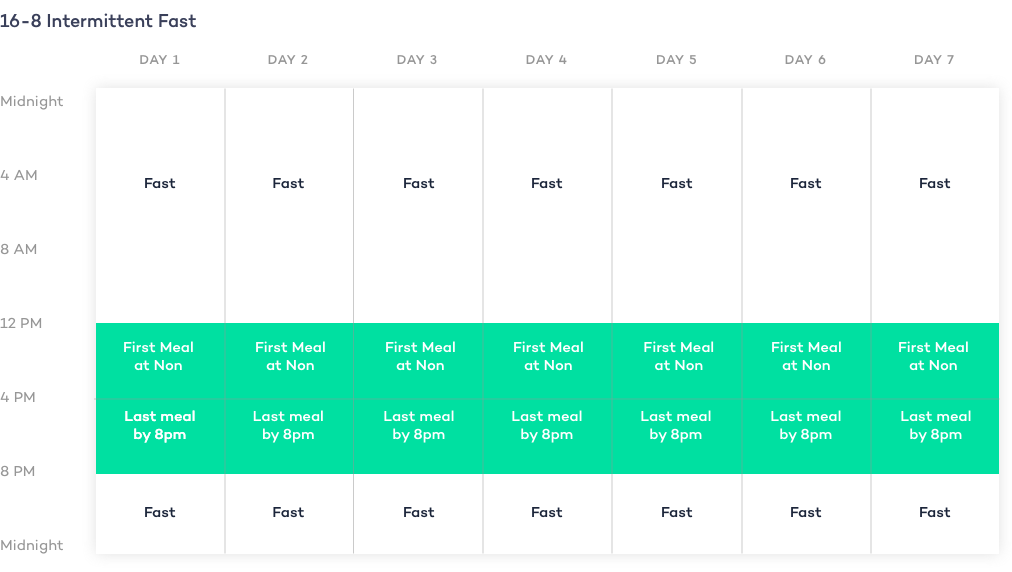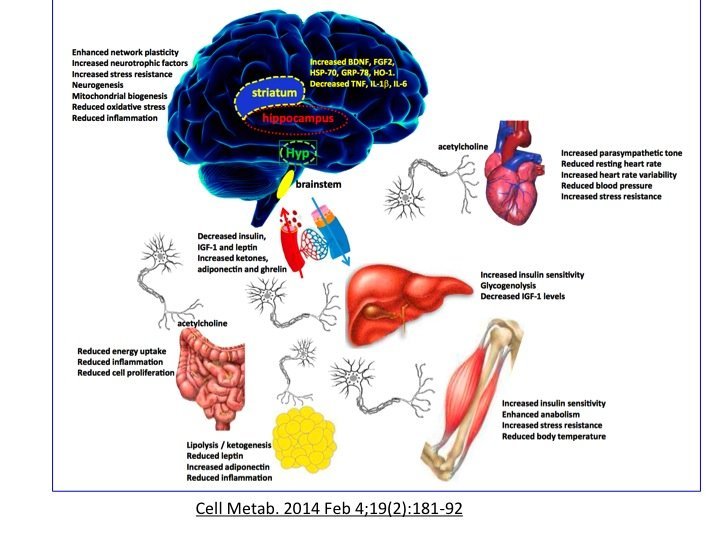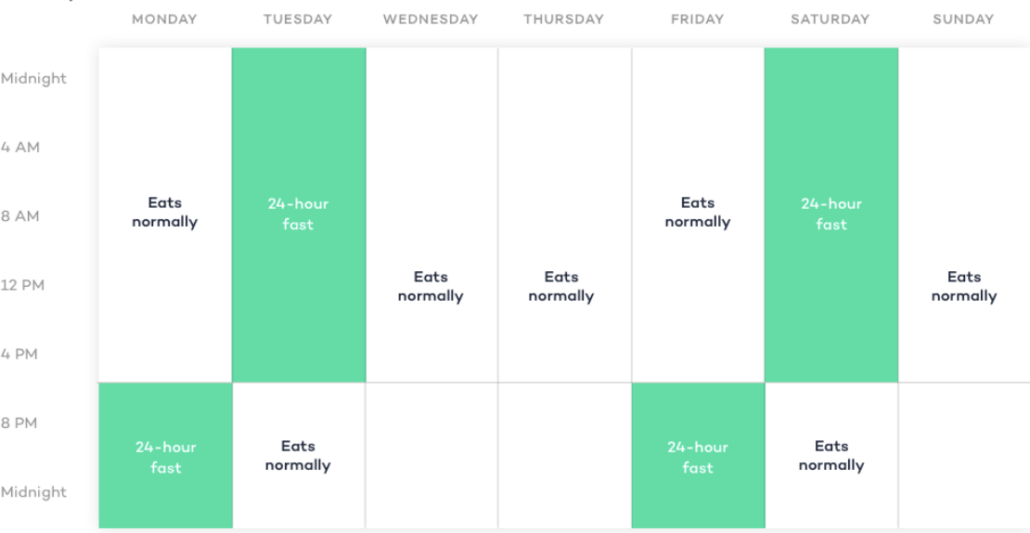Do athletes need to do extended fasting for the benefits of cell autophagy?
The type of exercise that is considered best for stimulating cell autophagy and mitophagy is still an area of ongoing research, and the optimal exercise regimen may vary depending on individual factors and specific research studies. However, certain types of exercise have shown promising effects on autophagy and mitophagy. Here are a few examples:
- Endurance or aerobic exercise: Activities such as running, cycling, swimming, and brisk walking, which involve sustained moderate-intensity exercise, have been shown to induce autophagy and mitophagy in various tissues. Studies have reported increased autophagy markers in skeletal muscle and other organs after aerobic exercise.
- High-intensity interval training (HIIT): HIIT involves short bursts of intense exercise followed by periods of rest or low-intensity exercise. Some studies suggest that HIIT can enhance autophagy and mitophagy in skeletal muscle. However, more research is needed to fully understand the optimal intensity, duration, and frequency of HIIT for these cellular processes.
- Resistance or strength training: Resistance exercises like weightlifting and resistance band workouts can also stimulate autophagy and mitophagy, particularly in skeletal muscle. Resistance training induces mechanical stress on muscle fibers, leading to cellular adaptations, including autophagy activation.
It’s important to note that the intensity, duration, and frequency of exercise can influence the extent of autophagy and mitophagy. Balancing exercise with adequate rest and recovery is crucial for optimal cellular adaptations. Additionally, individual factors such as age, fitness level, and overall health may influence the response to exercise-induced autophagy and mitophagy.
Further research is needed to fully elucidate the specific exercise protocols and mechanisms that optimize autophagy and mitophagy in different tissues and under various conditions. It is advisable to consult with a healthcare professional or exercise specialist who can provide personalized guidance based on your specific goals and needs.
What is cell autophagy?
“Cell autophagy, often referred to simply as autophagy, is a cellular process that involves the degradation and recycling of cellular components. The term “autophagy” originates from the Greek words “auto” meaning “self” and “phagy” meaning “to eat,” reflecting the self-cannibalistic nature of this process.
Autophagy is a tightly regulated mechanism that allows cells to maintain their health and adapt to changing environmental conditions. It serves as a quality control system by identifying and removing damaged or dysfunctional cellular components, such as organelles, proteins, and even entire cells. Autophagy also plays a crucial role in cellular homeostasis, energy metabolism, and the response to stress.
The process of autophagy involves the formation of double-membrane structures called autophagosomes. These autophagosomes engulf and sequester the cellular components targeted for degradation. The autophagosomes then fuse with lysosomes, specialized cellular compartments containing enzymes capable of breaking down the sequestered material. The resulting fusion forms autolysosomes, where the engulfed contents are degraded into their basic building blocks, such as amino acids, lipids, and nucleotides. These building blocks can then be recycled and reused by the cell to sustain cellular functions or undergo further synthesis.
Autophagy is regulated by a complex network of signaling pathways, including the mammalian target of rapamycin (mTOR), AMP-activated protein kinase (AMPK), and various autophagy-related genes (ATGs). These pathways sense nutrient availability, energy status, and other cellular cues to modulate autophagy activity.
Autophagy plays critical roles in various physiological processes, including development, immune response, removal of protein aggregates, and protection against pathogens. Dysregulation of autophagy has been implicated in the pathogenesis of numerous diseases, including neurodegenerative disorders, cancer, metabolic disorders, and infections.
Overall, autophagy is an essential cellular process that helps maintain cellular health, adapt to stress, and support overall organismal well-being.
Your Body Has Two Modes
Dr. Fung explains that your body has two metabolic modes:
- Growth mode: Where your body assimilates nutrients into body tissues, including fat and muscle.
- Repair mode: When you’re in a fasted state, and your body activates a process of cellular repair and renewal called autophagy.
Autophagy
Autophagy, which literally means self-devouring, is a process where your cells begin to break down old cell parts (and even entire cells) and recycle them into new parts.
Your body activates autophagy when you restrict calories for at least 16-18 hours. And this restricted period must take place overnight when it aligns with your internal circadian rhythm. . However, the timing of your fast is paramount. [1] [2]. [3]
Autophagy is an area of growing research, with preliminary studies revealing numerous powerful health benefits, including:
- Increased longevity and anti-aging effects 4 5
- Reduced Inflammation 6 7
- Anti-cancer properties 8 9
- Supports cardiovascular health 10
- Protection against neurodegenerative diseases like Alzheimer’s and Parkinsons 2
You can hear Dr. Jason Fung run through the basic of autophagy below
What is Intermittent Fasting?
Intermittent fasting simply means restricting the times you eat to a specific time window and completely eliminating caloric intake during your fasting period.
Intermittent fasting is a broad term that entails shorter-term or “time-restricted eating” techniques while also referring to longer fasting periods like OMAD “one meal a day’” and other methods that require abstaining from food for 24 hours or longer. .3 4
What Fasting Methods Does Jason Fung Recommend?
Dr. Fung supports all types of intermittent fasting and believes that they can and should be tailored to individual needs and goals.
Time Restricted Eating
The easiest approach that Jason Fung suggests is eating breakfast at around * am and then dinner at 6 pm. This ten-hour eating window is pretty liberal, but not eating after dark activate innate metabolic processes governed by your circadian rhythm.
Studies have found that abstaining from calories after sundown results in surprisingly powerful benefits, including
- Reduced body fat [13]
- Better sleep[14]
- Relief from digestive issues, including abdominal pain, bloating, diarrhea, and constipation [16]
- Reduced intestinal dysbiosis (overgrowth of harmful bacteria)[17]
- Improved recovery of immune cells [18]
Source: Cell Metabolism
16/8 Fasting
If TRE is working for you, Jason Fung often suggests that you push it to 16 hours of not eating.
This method is called 16/8 intermittent fasting. You eat during and 8-hour period, ideally before dark. This is the shortest fast that will significantly activate autophagy.
It will also help your body process and eliminate excess blood sugar, while triggering your body to break down stored fat on your body to use as energy.
24 Hour Fast
If the 16/8 method is comfortable for you, try increasing to a 24-hour fast. Your body will enter into deeper states of autophagy and ketosis.
You’ll also stimulate the production of a hormone associated with the generation of brain cells called brain-derived neurotrophic factor, or BDNF. Preliminary research suggests that the production of BDNF when fasting contributes to reductions in depression, anxiety, and protection against neurodegenerative diseases. [34]
Alternate Day Fasting
For some people, Jason Fung suggests trying more intensive fasting periods from 30-40 hours.
This approach is often called alternate day fasting or ADF. For most people, this approach takes some working up to. For most people, hormonal balance and sensitivities need to be gradually trained before embarking on a prolonged fast comfortably.
ADF looks like this:
- Day 1: Eat a well-formulated food plan to complete satisfaction. Make sure to load up on healthy fats from whole foods. It’s recommended to finish eating by 8 pm.
- Day 2: Abstain from food completely. A modified type of ADF allows for consuming up to 500 calories
- Day 3: Repeat day 1
- Day 4: Repeat day 2
What Does Jason Fung Recommend Eating When Fasting?
Jason Fung recommends consuming whole foods centered around quality meats and animal products, along with low-carb veggies and fruits.
Green tea and bone broth are beverages that you’ll find on Jason Fung’s meal plan.
What is mitophagy?
Mitophagy is a specialized form of autophagy that specifically targets and removes damaged or dysfunctional mitochondria within cells. It is a critical process for maintaining mitochondrial quality control, ensuring the proper functioning of these vital cellular organelles.
Mitochondria are often referred to as the “powerhouses” of the cell as they are responsible for producing cellular energy in the form of adenosine triphosphate (ATP) through oxidative phosphorylation. However, mitochondria can also be a source of reactive oxygen species (ROS) and other harmful byproducts, which can cause damage to their own components and other cellular structures.
Mitophagy acts as a selective process to remove damaged or unwanted mitochondria, preventing the accumulation of dysfunctional mitochondria that could lead to cellular dysfunction and the generation of oxidative stress. By eliminating damaged mitochondria, mitophagy helps maintain cellular homeostasis and promotes mitochondrial health.
The process of mitophagy involves several steps:
- Recognition and tagging: Damaged mitochondria are recognized and marked for degradation by specific molecular markers. One such marker is the protein PINK1 (PTEN-induced kinase 1), which accumulates on the outer membrane of damaged mitochondria.
- Recruitment of autophagy machinery: Another key player in mitophagy is the protein Parkin, an E3 ubiquitin ligase. Once PINK1 has accumulated on the damaged mitochondria, it recruits and activates Parkin. Parkin then ubiquitinates proteins on the surface of the mitochondria, marking them for recognition by the autophagy machinery.
- Autophagosome formation: The ubiquitinated mitochondria are then engulfed by autophagosomes, which are double-membrane vesicles that sequester the damaged mitochondria.
- Fusion with lysosomes: The autophagosomes containing the damaged mitochondria fuse with lysosomes, forming autolysosomes. The contents of the autophagosomes, including the damaged mitochondria, are broken down and degraded by lysosomal enzymes.
The specific molecular mechanisms and regulators of mitophagy are still an area of active research. Several key proteins, including PINK1, Parkin, and various autophagy-related genes (ATGs), are involved in coordinating the process of mitophagy.
Mitophagy is essential for maintaining mitochondrial health and function, and its dysregulation has been implicated in various diseases, including neurodegenerative disorders, cardiovascular diseases, and metabolic disorders. Understanding the mechanisms and regulation of mitophagy is crucial for developing potential therapeutic strategies to modulate this process and target mitochondrial dysfunction in diseases.
Do athletes need to do fasting + endurance zone 2 exercise + HIIT + strength training to live simply ageless?
While fasting and exercise can both stimulate cell autophagy, it is important to note that fasting or exercising alone can also trigger autophagy to some extent. The decision to combine fasting and exercise as a strategy to enhance cell autophagy is a topic of ongoing research and may vary depending on individual factors and specific goals.
Fasting: Fasting has been shown to activate autophagy in various tissues, including skeletal muscle and liver. During fasting, when nutrient availability is limited, the body relies on stored energy sources, such as glycogen and fat, leading to a reduction in insulin levels. This reduction in insulin, along with the activation of certain signaling pathways, can promote autophagy. Prolonged fasting or intermittent fasting regimens may have more pronounced effects on autophagy.
Exercise: Exercise, particularly endurance or aerobic exercise, has also been demonstrated to stimulate autophagy in various tissues, including skeletal muscle and heart tissue. The specific mechanisms through which exercise promotes autophagy involve signaling pathways such as AMP-activated protein kinase (AMPK), mammalian target of rapamycin (mTOR), and peroxisome proliferator-activated receptor gamma coactivator 1-alpha (PGC-1α). These pathways can be activated during exercise, leading to increased autophagy activity.
Combining fasting and exercise: Some studies suggest that combining fasting with exercise may have additive effects on autophagy. The rationale is that fasting may further enhance autophagy by depleting nutrient stores and increasing reliance on cellular recycling mechanisms. However, it is important to consider individual factors, including overall health, fitness level, and training goals, before implementing fasting and exercise together.
It is worth noting that excessive or prolonged fasting, or combining fasting with intense exercise, can also have negative consequences on overall health, energy levels, and performance. Balancing nutritional needs, recovery, and overall well-being is crucial for athletes.
If you are considering incorporating fasting and exercise to enhance autophagy, it is advisable to consult with a healthcare professional, registered dietitian, or sports nutritionist. They can provide personalized guidance based on your specific needs and goals and help determine the most suitable approach to optimize autophagy and overall athletic performance.
Would daily exercise and weekly fasting enhance cell autophagy vs. fasting alone?
Both exercise and fasting have been shown to stimulate cell autophagy to some extent, but the extent of autophagy induction may vary between these two factors. It is challenging to definitively determine which one creates more cell autophagy as the response depends on various factors, including the type and intensity of exercise, duration of fasting, individual characteristics, and overall health status.
Exercise-induced autophagy: Exercise, particularly endurance or aerobic exercise, has been consistently linked to the activation of autophagy in different tissues. Exercise activates signaling pathways such as AMP-activated protein kinase (AMPK) and mammalian target of rapamycin (mTOR), which can stimulate autophagy. The intensity, duration, and frequency of exercise can impact the extent of autophagy induction. However, it’s important to note that excessive exercise or chronic exercise overload without adequate recovery can potentially have negative effects on autophagy and overall health.
Fasting-induced autophagy: Fasting or periods of nutrient deprivation have also been shown to trigger autophagy. During fasting, the body’s energy stores, such as glycogen and fat, become depleted, leading to reduced insulin levels and activation of certain signaling pathways involved in autophagy regulation. Prolonged fasting or specific fasting protocols, such as intermittent fasting, may have more pronounced effects on autophagy induction.
Combined effects: Some studies suggest that combining fasting and exercise may have additive or synergistic effects on autophagy induction. Fasting may further deplete nutrient stores, while exercise can activate specific signaling pathways, thereby enhancing autophagy. However, the precise impact of this combination and the optimal protocols are still areas of ongoing research.
It’s important to approach autophagy induction with a balanced perspective. While autophagy is a vital cellular process, excessive or prolonged fasting, as well as intense or excessive exercise, can have negative consequences on overall health and well-being. Optimal autophagy induction should be achieved through a well-rounded approach that includes regular exercise, balanced nutrition, and appropriate recovery.
Ultimately, the choice between exercise and fasting as a means to stimulate autophagy should be based on individual factors, preferences, and specific goals. Consulting with healthcare professionals, registered dietitians, or sports nutritionists can provide personalized guidance based on your unique needs and help you design an appropriate approach.



